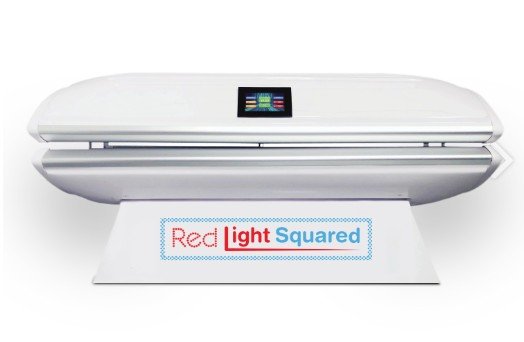LED Light Therapy at Home: Everything You Need to Know

Most people worry about their skin, and for a good reason. Our skin – the largest organ of our bodies – is taking a heavy beating on a daily basis, either by malnutrition, bad habits like smoking and alcohol, bad sleeping habits, stress and city life pollution.
Using a LED light therapy at home device is a simple way to improve your skin’s health without surgery or overthinking.
In this guide I will explain how LED Therapy works, what it’s good for, and what it can’t do, along with tips for daily use. This technology can help whether you want to fight acne or make your skin look younger without much hustle.
So, without further ado, let’s get started on changing how you care for your skin.
What is LED Light Therapy and How Does It Work?
LED (light-emitting diode) light therapy is a non-invasive, painless treatment that uses different wavelengths of light to improve various skin conditions and concerns, such as acne, fine lines, and psoriasis. [1]
Each wavelength corresponds to different visible colors, and each color (e.g like Red, Blue, White, Green, etc) penetrates the skin at different depths.
For example, blue light is known to kill acne-causing bacteria, and red light can reduce inflammation and boost collagen production, making your skin look plumper and smoother.
LED light therapy works by emitting specific wavelengths of light that are absorbed by cells in the body. Different wavelengths of light are absorbed by different cells and can have different effects on the body.
During LED Light treatment, you might feel some warmth but no discomfort. The treatment usually lasts about 20 minutes, and you can have this treatment at a spa or in our case, at home. Several at-home devices are also available, such as masks, wands, and other hand-held products which I am going to discuss further down this article.
LED light therapy is a safe treatment for several skin conditions, including acne, skin aging, skin wounds, and other problems. Research indicates that this therapy offers promising results, although people may need several treatments to see results[8].
LED light therapy is a simple way to take care of your skin at home, just like the professionals do.
If you use LED light therapy regularly, you may notice fewer wrinkles and more even skin tone, giving you a younger-looking face.
This is a well-researched technique to keep your skin healthy without the need for strong chemicals or surgeries.
What Conditions Does LED Light Therapy Treat?
As I mentioned earlier, LED light therapy uses different wavelengths of light to address various skin conditions. Depending on the color of the light (more on that later), it can target different layers of the skin and stimulate different biological processes.
Here are some of the common conditions that LED light therapy can treat:
- Eczema. This is a chronic inflammatory skin condition that causes dry, itchy, and red patches of skin. LED light therapy can help reduce inflammation, soothe irritation, and improve skin barrier function.
- Hair loss. LED light therapy can stimulate blood circulation and cellular activity in the scalp, which can promote hair growth and prevent hair loss. It can also improve the health and appearance of the hair follicles. [2]
- Mild to moderate acne. Blue LED light therapy can kill acne-causing bacteria, reduce inflammation, and regulate sebum production. It can also help heal acne scars and prevent future breakouts. [3]
- Psoriasis. This is another chronic inflammatory skin condition that causes thick, scaly, and red plaques of skin. LED light therapy can help reduce inflammation, relieve itching, and speed up wound healing.
- Rough, scaly, precancerous spots on the skin (actinic keratosis). These are caused by long-term sun exposure and can increase the risk of skin cancer. LED light therapy can help remove these spots by triggering a natural reaction in the skin cells that causes them to die off. [4]
- Rosacea. This is a chronic skin disorder that causes redness, flushing, and visible blood vessels on the face. LED light therapy can help reduce redness, calm inflammation, and improve skin tone and texture.
- Sun damage. LED light therapy can help reverse the signs of sun damage by stimulating collagen production, improving elasticity, and reducing pigmentation. It can also help prevent further sun damage by strengthening the skin’s natural defense mechanisms.
- Wounds. LED light therapy can accelerate wound healing by increasing blood flow, oxygen, and nutrients to the injured area. It can also reduce inflammation, pain, and infection risk.
- Wrinkles. LED light therapy can help smooth out wrinkles by boosting collagen and elastin synthesis, which are the main structural proteins of the skin. It can also improve skin hydration and firmness. [5]
- Basal cell carcinoma. This is the most common type of skin cancer that usually grows slowly and rarely spreads. LED light therapy can help destroy these cancer cells by activating a photosensitive drug that is applied to the skin before the treatment. [4]
Limitations of LED Light Therapy
LED light therapy has some great points, but it’s not a magic fix.
When you use it at home, remember that it’s safe and easy, but it mightn’t work as well as the treatments you get at a clinic, especially for “tough” skin issues.
Home LED devices are gentle and take time to show changes, unlike the stronger ones at the doctor’s office.
Also, LED light therapy isn’t the best for every skin problem. Sure, it’s good for acne or signs of getting older, but for serious skin issues, you might need to see a doctor. Think of LED therapy as an extra help in your daily skin care routine, not the only thing you rely on to fix your skin.
Having a healthy skin requires more than just LED light therapy. Although LED light therapy CAN help you improve your skin, it’s not the only thing that matters. You have to “love” your skin and treat it well.
You need to take care of your skin by cleansing, moisturizing, and protecting it from the sun. And don’t forget to drink plenty of water and eat a diet high in collagen, fatty acids and antioxidants, as well as getting your skin-specific supplements.
If you’re thinking about adding LED therapy to your routine, it’s a good idea to look into different devices.
For example, the ‘LightStim for Wrinkles‘ is a popular choice that many people like you find useful for reducing fine lines. Remember, results can vary, and it’s all about patience and consistency.
Types of LED Light Therapy
If you’re thinking about using LED light therapy at home, it’s good to know what kinds are out there and what they do.
Red light therapy can get deep into your tissues and might help make your skin look better and ease pain.
Blue light therapy is really good for going after the bacteria that cause acne.
Other colors like yellow, green, and cyan each have their own benefits too.
For example, yellow light can lessen redness in your skin, and green light has a calming effect on skin that’s irritated or inflamed.
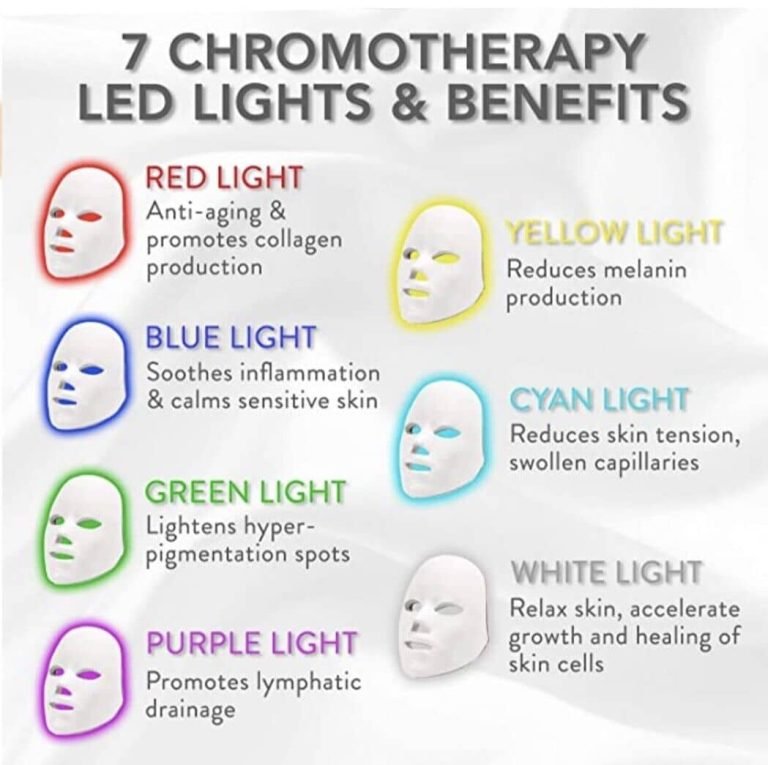
Red (Infrared) Light Therapy
Red light therapy, also known as low-level laser therapy (LLLT) or photobiomodulation (PBM), which uses low wavelength red light, is a favored skin treatment that goes deep beneath the surface to help heal and refresh your skin.
It’s especially good at making more collagen, which keeps skin tight and supple. Plus, it’s known to lessen swelling, making your skin look and feel better.
Let’s break down the perks of red light therapy:
| Benefit | What It Does | How Deep It Goes |
|---|---|---|
| Collagen Creation | Makes more collagen for tighter skin. | Deep |
| Reducing Swelling | Helps with healing and comfort by lessening swelling. | Different levels |
| Healing Aid | Encourages cells to repair and renew themselves. | Deep |
| Easing Pain | Helps ease pain from things like arthritis. | Deep into tissue |
If you’re thinking about trying red light therapy at home, pick a device that clearly states it uses the right wavelength range to get these benefits.
Red Light Therapy typically uses light in the wavelength range of 600-1000nm. However, the most effective wavelengths for a wide array of treatments have been found to be 610nm, 630nm, 660nm, 810nm, 830nm, & 850nm.
Among these, 660nm and 850nm are the most widely used.
Blue Light Therapy
Blue light therapy is another widely-used treatment you can do at home with LED devices.
It’s great for fighting the bacteria that cause acne and helps make your skin clearer.
Blue light has a specific wavelength that’s known to kill bacteria, which is one of the main reasons people get acne.
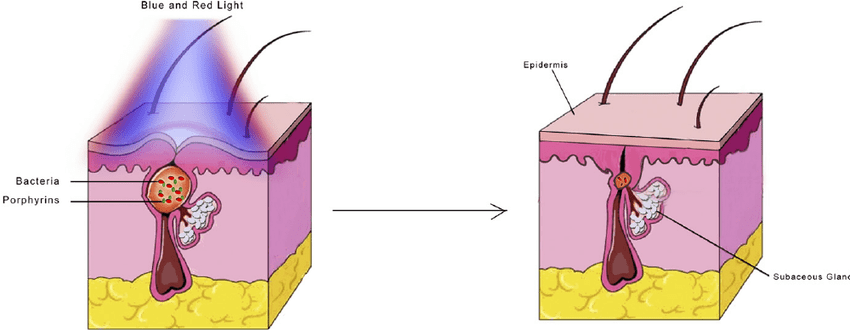
When this light goes into your skin, it can help control your oil-producing glands and reduce swelling. This can help with acne and other skin issues like dermatitis.
Keep in mind that Blue Light Therapy typically uses light in the wavelength range of 415 to 495nm.
Yellow Light Therapy
Yellow light therapy (or amber light therapy) is a gentle way to help your skin heal and reduce redness. It’s a type of LED light therapy that sends light waves a little bit under the skin.
It works by stimulating circulation and the production of red blood cells, which play a vital role in skin healing and skin cell rejuvenation.
Yellow Light therapy can reduce skin redness and flushing, heal skin irritation and rosacea, pigmentation, reduce fine lines and wrinkles, alleviate visible signs of sun damage, reduce the appearance of tiny blood vessels on the nose/face, boost lymphatic flow (which helps remove toxins from the targeted area), and increase cellular growth
This helps your skin fix itself and look younger. Doctors often suggest using yellow light therapy if your skin is feeling irritated from other strong treatments.
Yellow Light Therapy uses a range of wavelengths from 570nm-620nm
You can for less than $40. It should do the work just fine.
Use this Hooga Health coupon code (opens in new window) to save 12% from your order.

Green Light Therapy
If you’re looking for a gentle and natural way to improve your skin and maybe even ease your migraines, you might want to give green light therapy a try.
This is a type of LED therapy that uses green light waves to target various skin issues, such as redness, rosacea, wrinkles, sun damage, and hyperpigmentation.
Green light therapy can also help with blood circulation, lymphatic drainage, and cellular growth, which can make your skin look healthier and younger.
Plus, green light therapy has been shown to be soothing and calming for people who suffer from photophobia or light sensitivity, which is often associated with migraines.
To get the best results, you should do green light therapy for 30 minutes to an hour twice a week, unless your doctor advises otherwise.
Here’s what you might see when you use green light therapy in your daily skincare:
- Your sunspots and uneven skin color might become less noticeable.
- It can help calm the redness from rosacea, making your skin look more even.
- It’s a comforting treatment that doesn’t harm your skin and helps bring it back to a healthy look.
Again, you can purchase this for less than $40. If you use the Hooga coupon code I mentioned earlier, you’ll get a 12% OFF on your entire order.
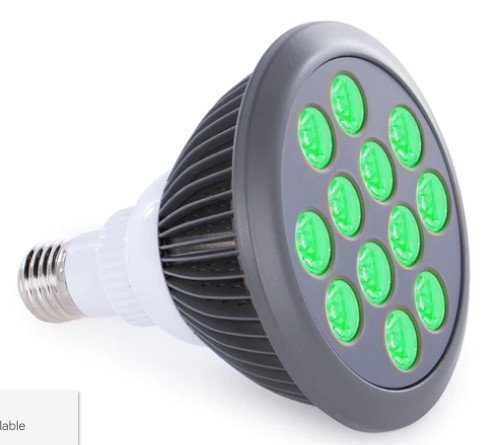
Green Light Therapy, uses a range of wavelengths from 495 to 570nm.
Cyan (blue-violet) Light Therapy
Cyan light therapy is another type of LED light therapy that uses blue-violet light to treat various skin conditions.
Cyan light can help reduce inflammation, clear the skin, prevent acne, and calm an irritated complexion.
It works by decreasing the size of the capillaries and enhancing cell energy and metabolism. Cyan light therapy can also have a relaxing effect on the skin’s surface.
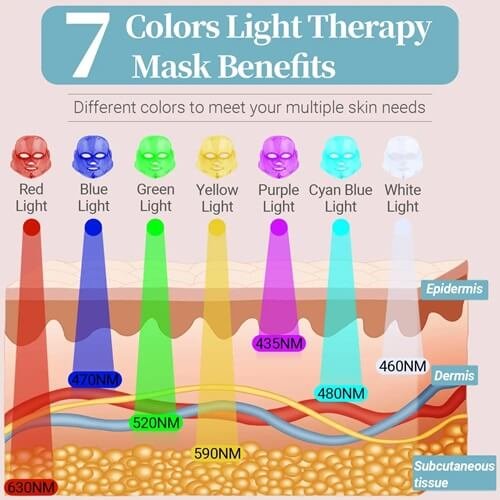
Cyan light therapy uses wavelengths between 490 nm and 520 nm, which penetrate the skin slightly deeper than blue light but not as deep as red or near-infrared light.
Cyan light therapy can be used alone or in combination with other colors of LED light therapy, depending on the specific skin issue and desired outcome .
Purple Light Therapy
Purple light therapy is another type of LED light therapy that combines red and blue lights to treat various skin issues.
Red light is good for anti-aging, collagen production, and wrinkle reduction, while blue light is good for soothing inflammation, calming sensitive skin, and killing acne-causing bacteria.
Purple light therapy can help with cell regeneration and renewal, acne prevention and healing, and reducing facial inflammation and scars.
Purple light therapy has a wavelength of about 380-495 nm, which means it can penetrate deeper than blue light, but not as deep as red light. It can reach the uppermost layer of your skin and affect the sebaceous glands, which produce oil and cause acne.
Purple light therapy is different from other LED lights because it combines two colors that have different effects on the skin.
White Light Therapy
White light therapy is composed of different wavelengths of light, including red, blue, and green. White light therapy can help with:
- Depression, seasonal affective disorder (SAD), and mood disorders: White light therapy can stimulate the production of serotonin, a neurotransmitter that regulates mood, energy, and sleep. Serotonin levels tend to drop in winter due to less sunlight exposure. White light therapy can mimic the effects of natural sunlight and boost serotonin levels, reducing symptoms of depression and SAD .
- Sleep disorders: White light therapy can also regulate the production of melatonin, a hormone that controls the sleep-wake cycle. Melatonin levels rise at night and fall in the morning, signaling the body when to sleep and wake up. White light therapy can help adjust the circadian rhythm by exposing the eyes to bright white light in the morning, suppressing melatonin and promoting alertness. White light therapy can also help people who have jet lag, shift work disorder, or delayed sleep phase syndrome .
- Skin conditions: White light therapy can benefit the skin by combining the effects of different wavelengths of light. Red light can stimulate collagen production, reduce inflammation, and promote wound healing. Blue light can kill acne-causing bacteria and reduce sebum production. Green light can reduce hyperpigmentation and improve skin tone. White light therapy can also treat eczema, psoriasis, rosacea, sun damage, wrinkles, and hair loss .
- Pain relief: White light therapy can also reduce pain by increasing blood circulation, reducing inflammation, and relaxing muscles. White light therapy can help with joint pain, muscle pain, headaches, migraines, and menstrual cramps .
White light therapy is usually done by sitting in front of a device that emits 10,000 lux of white light for 20 to 30 minutes every morning.
The device should be placed at eye level and about 16 inches away from the face. The eyes should be open but not directly looking at the light.
White light therapy is generally safe and well-tolerated, but some people may experience side effects such as eye strain, headache, nausea, or insomnia. These side effects are usually mild and temporary, and can be avoided by adjusting the duration or intensity of the treatment.
Here is a table with the various LED light colors and their wavelengths:
| LED Color | Wavelength (nm) |
|---|---|
| Infrared | 875 |
| Red | 660 |
| Orange | 620 |
| Yellow | 590 |
| Green | 525 |
| Blue | 472 |
| Violet | 432 |
| Ultraviolet | 395 |
What can LED Light Therapy Do To My Skin? What Are Its Benefits
Why might you want to add LED light therapy to your daily skin care? This therapy uses different colors of light to help with various skin issues, giving you several good reasons to try it for healthier, better-looking skin.
Here’s what it can do for you:
- Skin Renewal: By encouraging your skin to make more collagen, LED light therapy can make your skin tighter and more full. This means fewer lines and less noticeable wrinkles.
- Skin Repair: It helps your skin heal faster and reduces redness and swelling. This makes it a helpful option for people recovering from skin treatments or those with acne.
- Improved Complexion: With regular use, it can make your skin tone and texture better, lighten dark spots, and give you a more consistent skin color.
- Fighting Acne: Blue light therapy has been proven to significantly reduce acne. People who’ve tried it have seen fewer acne spots.
- Looking Younger: Lights that are red or near-infrared can boost collagen in your skin. This helps smooth out small lines and makes skin look fresher.
- Healing: Just as you feel relieved when your bus arrives after a long day, your skin can feel the relief with LED therapy. It speeds up the skin’s ability to heal itself.
What are the potential side effects?
LED light therapy is usually safe, but sometimes you might get a bit of redness or discomfort after using it.
These side effects are often not a big deal and go away by themselves. But if you keep feeling bad or if your reaction is really strong, stop using the therapy and talk to a doctor.
Related: Does Red Light Therapy Cause Cancer?
What Parts of the Body Can You Treat with and LED Light Therapy Device For Home Use?
LED light therapy devices for home use are great for taking care of different parts of your body such as the face, neck, chest, and hands.
These tools are really useful for dealing with skin problems like acne, signs of aging, and uneven skin tone.
Let me break down the areas you can focus on with your device and what each color light can do:
- For the face, blue light can help with acne, and red light can reduce wrinkles.
- The neck can benefit from red light for firming the skin and near-infrared light to help with aging.
- Red and near-infrared lights can improve sun-damaged skin and signs of aging on the chest.
- Hands can look better with red light for age spots and near-infrared light for moisturizing dry skin.
It’s crucial to use your LED light therapy device correctly to make sure it’s safe and works well. Always start with clean skin, and wear eye protection if the instructions say so.
What to Expect After Your LED Light Therapy Routine?
After you finish a session of LED light therapy, you might notice your skin looks brighter right away, but the effects can be different for everyone.
It’s smart to know that you won’t see all the benefits overnight and that using the therapy regularly is important to get the best results.
Here’s a more detailed look at what you might see after your treatment:
- Smoother Skin: You could feel that your skin is softer to the touch. This happens because the therapy can boost collagen, which makes your skin feel smoother.
- Less Redness: If your skin is a little red right after the treatment, this should go away quickly, leaving you with an even skin tone.
- Continuing to Get Better: As you keep up with the treatments, you might notice fewer fine lines and your skin may start to look fresher and more youthful.
These positive changes are backed by research and are part of the reason people find it worthwhile to take care of their skin using LED light therapy.
Types of LED Light Therapy Devices for home use
If you’re looking to try LED light therapy at home, there are several types of devices you can use, depending on what you need.
LED Light Therapy Beds
Adding a full-body LED light therapy bed to your home can greatly improve your home wellness treatments. This kind of bed covers you with healing light from head to toe, similar to the relaxing experience you’d find at a spa. The bed can help improve your skin and boost your overall health.
When shopping for one of these beds, you should keep these things in mind:
- First, choose a bed that provides various light wavelengths. Different wavelengths can address a variety of skin issues and contribute to better health. For example, some wavelengths may help reduce wrinkles, while others can speed up the healing of wounds.
- Second, it’s important to pick a bed that’s FDA-cleared. This means it’s been checked for safety and effectiveness, so you can use it knowing it’s reliable and good for you.
- Finally, make sure the bed is the right size for you and feels comfortable. You’ll want your light therapy sessions to be a relaxing and refreshing time, just like if you were at a spa. If you’re tall, look for a longer bed, so your feet aren’t hanging off the end.
LED Face Masks

LED face masks are a convenient way to treat your skin at home. These masks use different colors of light to fix various skin issues.
When you’re choosing an LED face mask, think about how comfortable it is, if it fits well, and how long you’ll need to wear it for each treatment.
It’s very important to make sure the mask is safe and meets any safety rules, and it should have something to protect your eyes if it’s needed. If you use the mask regularly, you might start to see your skin look and feel better.
For a specific product recommendation, the ‘LuminX FDA Cleared LED Face Mask‘ (above image) is you best choice. It’s FDA-approved and doesn’t cost and arm and a leg to purchase.
LED Wands
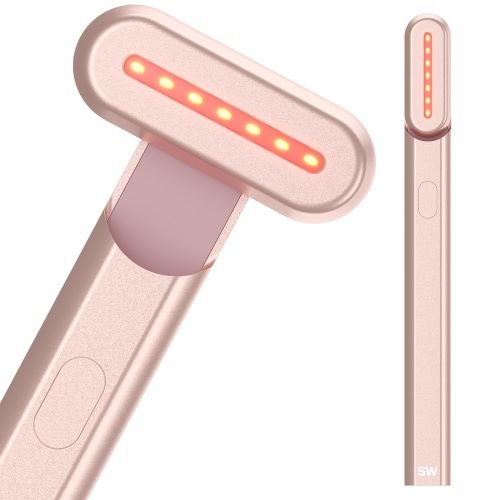
LED wands are a step up from face masks for a more focused light therapy. They’re simple to use, and you can treat specific parts of your skin like wrinkles, acne, or dark spots right at home.
Here’s what to look for when picking an LED wand for home treatments:
- Precision: With an LED wand, you can target just the areas you’re worried about, making sure you’re not missing any spots that need care.
- Portability: These wands are small, so it’s easy to fit a quick skin treatment into a hectic day or even bring them along when you travel.
- Variety: You have choices! LED wands come with different lights like red for wrinkles, blue for acne, and green for dark spots.
When using an LED wand, you get the same kind of treatment you’d expect from a skin care professional without leaving your house. It’s a convenient way to keep your skin looking its best.
If you’re looking to buy one, the ‘Solawave 4-in-1 Radiant Renewal Wand‘ (image above) is a popular option that provides red light therapy, or the ‘Foreo ESPADA Acne-Clearing Blue Light Pen‘ is great if you’re dealing with acne.
LED Panels
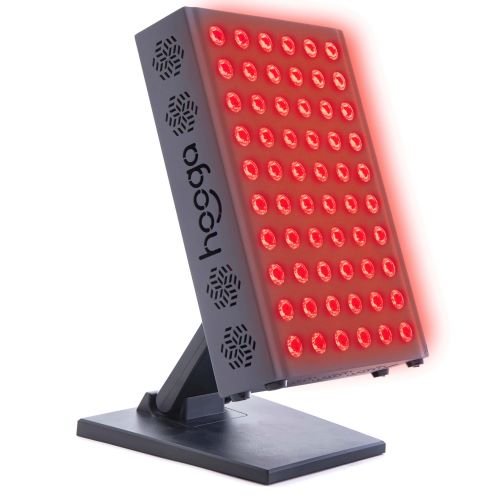
LED panels are a step up from handheld light therapy devices because they cover a bigger area, so you can treat more skin issues at once.
These panels are great for larger areas like your back, chest, or your whole face. You can easily adjust them to where you need the light and just relax while using them. It’s important to use them regularly because that’s how you get the best results. When picking an LED panel, think about how easy it’s to include in your daily routine.
For instance, the (image above) is a popular LED panel that offers red light therapy, which is great for smoothing wrinkles and boosting collagen.
LED Mats
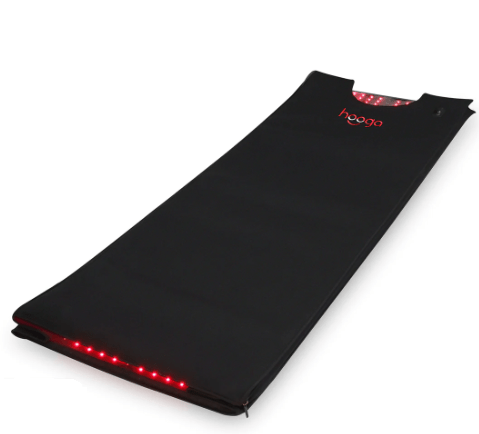
LED mats are a great option if you want a deeper and more complete light therapy session. These mats cover your whole body, which is perfect for treating various skin issues or for improving your overall health.
They work by surrounding you with therapeutic light, which can make your skin look better, lessen pain, and boost your mood.
Here’s why LED mats could be good for you:
- Comfort: Relax on the mat and let the soft LED lights help you unwind, providing a comfortable break from the day’s worries.
- Focused Help: Enjoy light therapy that targets specific areas, aiding in healing and reducing soreness.
- Whole Body Benefit: The light spreads across your body, helping you feel balanced and refreshed.
For those interested, a specific product example could be the ‘,’ (image above) which users can place on their bed or couch for full-body treatment.
This mat uses both red and near-infrared light to potentially aid in skin rejuvenation, muscle recovery, and mood enhancement.
LED Belts
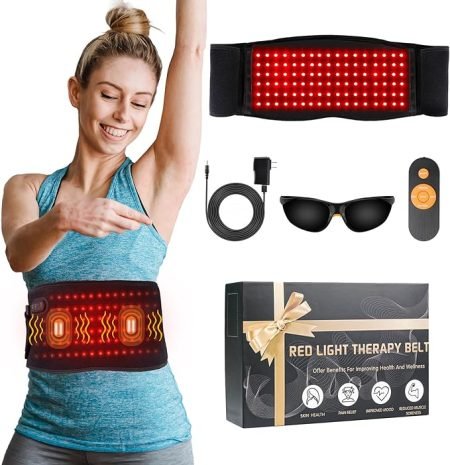
LED belts are great for concentrating light therapy on specific body parts such as your waist, back, or knees. These belts can be adjusted to fit snugly around the area you want to treat. Knowing which type of LED belt to get is key to addressing your particular health concerns effectively.
Let’s look at a simple table comparing different LED belts:
| Type | Where to Use | Color of Light |
|---|---|---|
| Pain Relief | Lower back, Knees | Red, Infrared |
| Skin Firming | Waist, Arms | Red, Amber |
| Muscle Healing | Stomach, Legs | Red, Infrared |
| Reducing Swelling | Back, Shoulders | Red, Blue |
| Boosting Blood Flow | Legs, Arms | Red, Infrared |
Each belt uses specific light colors and wavelengths to help with various health issues, such as easing pain, improving skin tone, aiding muscle recovery, lowering inflammation, or increasing blood circulation.
It’s important to pick a belt that matches what you need for your health. For instance, if you’re looking to help a sore back, you might choose a Pain Relief belt with red and infrared light.
Combination Devices

Multi-use light therapy devices are great because they can do more than one thing, helping with different skin issues and your overall health. When you’re picking out one of these handy tools, keep these points in mind:
- Variety of Colors: Choose a device that offers many colors. Each color can help with different skin problems, giving you a full treatment package. For instance, blue light is often used for acne, while red light may help with signs of aging.
- Adjustable Brightness: It’s good to have a device where you can change how bright the light is. This lets you make the treatment comfortable for you and possibly more effective.
- Easy to Use: Go for a device that’s simple to operate but still does everything you need. If it’s easy to use, you’re more likely to stick with your treatment plan.
What to consider before buying an LED Light Therapy Device for home usage
Before buying an LED light therapy device for home use, it’s important to consider the following:
- What skin problems you want to treat? Each color of light can help with different issues. For example, red light can help reduce wrinkles by boosting collagen, while blue light can help clear up acne because it kills bacteria.
- Is the device FDA approved? You should also make sure the device is FDA-approved, which means it’s safe and works well.
- Device Settings. Look for devices with settings you can change, so you can tailor the treatment to your skin’s needs. It’s a good idea to read reviews from other users to get an idea of how well the device works.
- How much does it cost? When it comes to cost, remember that more expensive doesn’t always mean better. You can find good devices at various prices, so pick one that fits your budget and meets your needs.
How much do LED Light Therapy device for home use cost?
When you’re looking to buy an LED light therapy device for home use, the price can vary a lot.
They can cost anywhere from about $30 to more than $500. This price difference is due to the different features they’ve and how well-known the brand is.
Let’s break down what you might get for your money:
- Budget-Friendly Options: For around $30, you can find simple versions of these devices. They’re less expensive but can still help with your skin issues.
- Better Features for a Bit More: If you spend between $100 and $250, you can get devices that have more options, like different light colors to treat various skin problems.
- Top of the Line: When you’re willing to pay over $300, you’re looking at the high-end models. These come from brands with good reputations and offer features that are close to what professionals use.
It’s important to remember that while the price matters, you should also think about how well the device works and if it fits what you need.
How often should i use led light therapy at home?
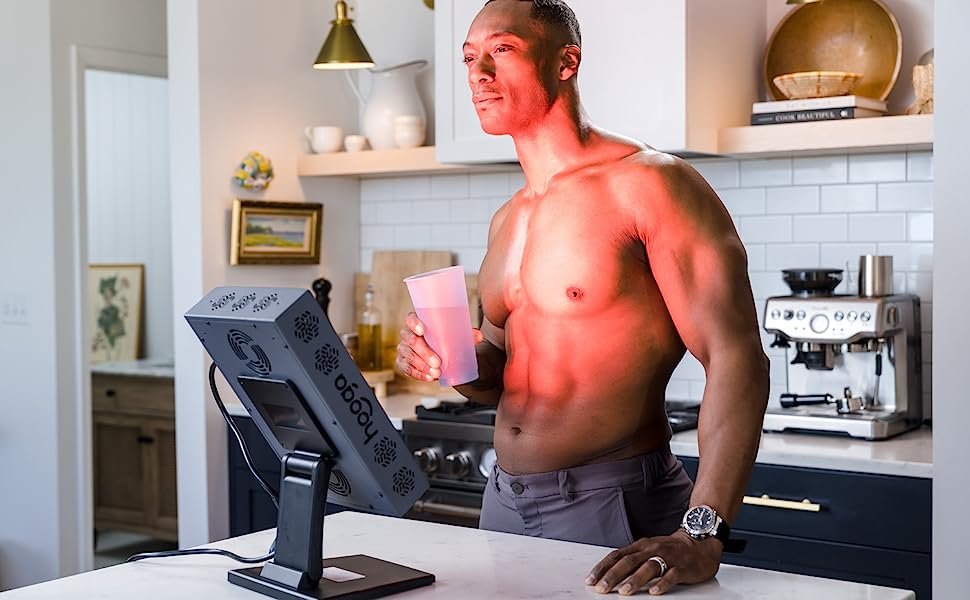
The number of times you use it each week depends on what you’re trying to treat and the kind of device you own.
But, to give you an idea, many skin care experts and device makers recommend sticking to a regular schedule.
Here’s a simple chart to help you out:
- For reducing wrinkles and other signs of aging, use it 3 to 5 times a week for about 10 to 20 minutes each time.
- If you’re dealing with acne, it’s best to use it every day or every other day, also for 10 to 20 minutes.
- To help with redness and swelling, aim for 3 to 5 sessions a week, each lasting 10 to 20 minutes.
It’s important to use your LED light therapy device as the instructions say, and if you’re unsure or have a special skin issue, always check with a doctor or skin expert.
Making it part of your regular skin care routine is essential to see improvements, so find a rhythm that fits well with your daily life.
Tips for using led light therapy at home
For better results with LED light therapy at home, consider doing these three things:
- Cleanse Your Face: Before using your LED light therapy device, make sure to wash your face well. This is important because any leftover makeup or dirt could block the lights and make the treatment less effective. This way, you’ll be more likely to see improvements in your skin, which is always a happy experience.
- Use it Regularly: Stick to a routine with your LED treatment, just like you’d with any other skincare practice. Follow the instructions that came with your device to see real changes in your skin. This could help you feel better about how you look.
- Eye Safety is a Must: Always wear protective goggles, or choose an LED device that has eye protection built in. Your eyes are delicate, and keeping them safe is an essential part of taking care of yourself.
Following these steps will help you use LED light therapy safely and effectively at home, leading to better skin and a happier mindset.
What are the differences between LED light therapy at home and in a salon?
When you try LED light therapy at home, the gadgets are weaker than what you’d find in a salon. This means you might have to use them more often or for longer times to see changes in your skin.
In a salon, trained experts can adjust the treatment to fit your skin’s needs, making sure it’s safe and effective.
Salons also have machines that can emit many different light wavelengths, which can tackle various skin problems better than the simpler devices for home use.
While doing it at home saves money and is convenient, going to a salon can give you quicker, more noticeable results because of their knowledge and better equipment.
For example, a salon might use an advanced LED panel that can switch between lights to reduce wrinkles, fight acne, or calm inflammation. At home, you might have a handheld device that only uses red light, which is good for general skin health but might not be as powerful.
If you’re serious about LED therapy and want the best results, it could be worth visiting a professional, even if it’s just to learn what works best for your skin.
Frequently Asked Questions
Bottom Line
When you’re deciding whether to use LED light therapy at a salon or to buy a device to use at home, think about what your skin needs, how much money you want to spend, and what’s most convenient for you.
It’s important to look at the good points and the bad points, including how it will help you in the long run and what the downsides might be. Keep these things in mind:
- Control Over Skincare: Using an at-home device lets you manage your skincare routine, which can make you feel good about yourself.
- Saving Money: You might spend less overall if you do treatments at home instead of paying for salon visits, even though you’ll have to pay for the device at first.
- Saving Time: Doing treatments at home can save you time because you won’t have to travel or wait at a salon. You can easily fit the treatments into your everyday schedule.
Making a well-thought-out decision can lead to results you’re happy with. Talk to a skin doctor to find the LED light therapy plan that works best for you.
Read Next

